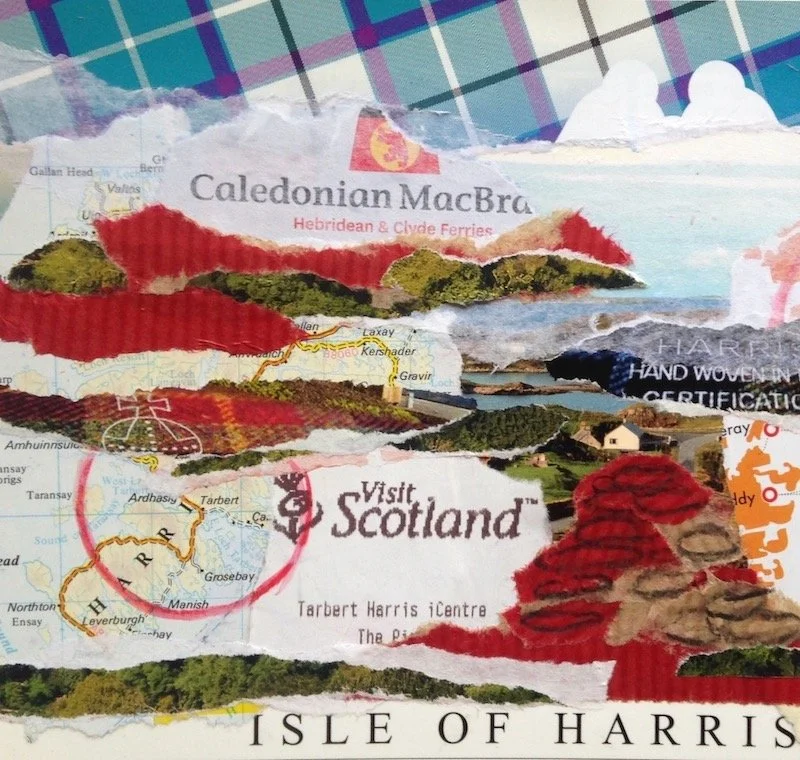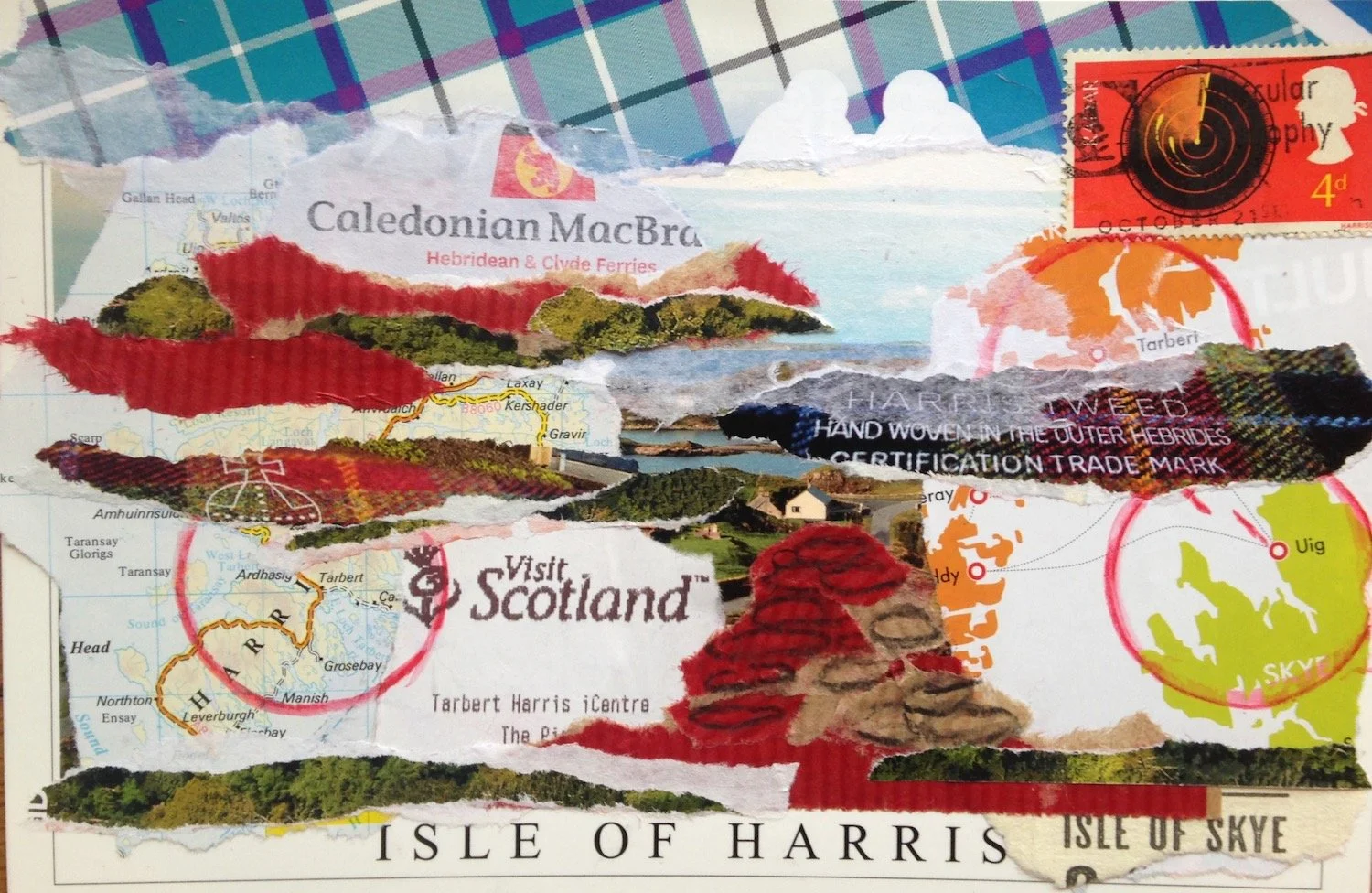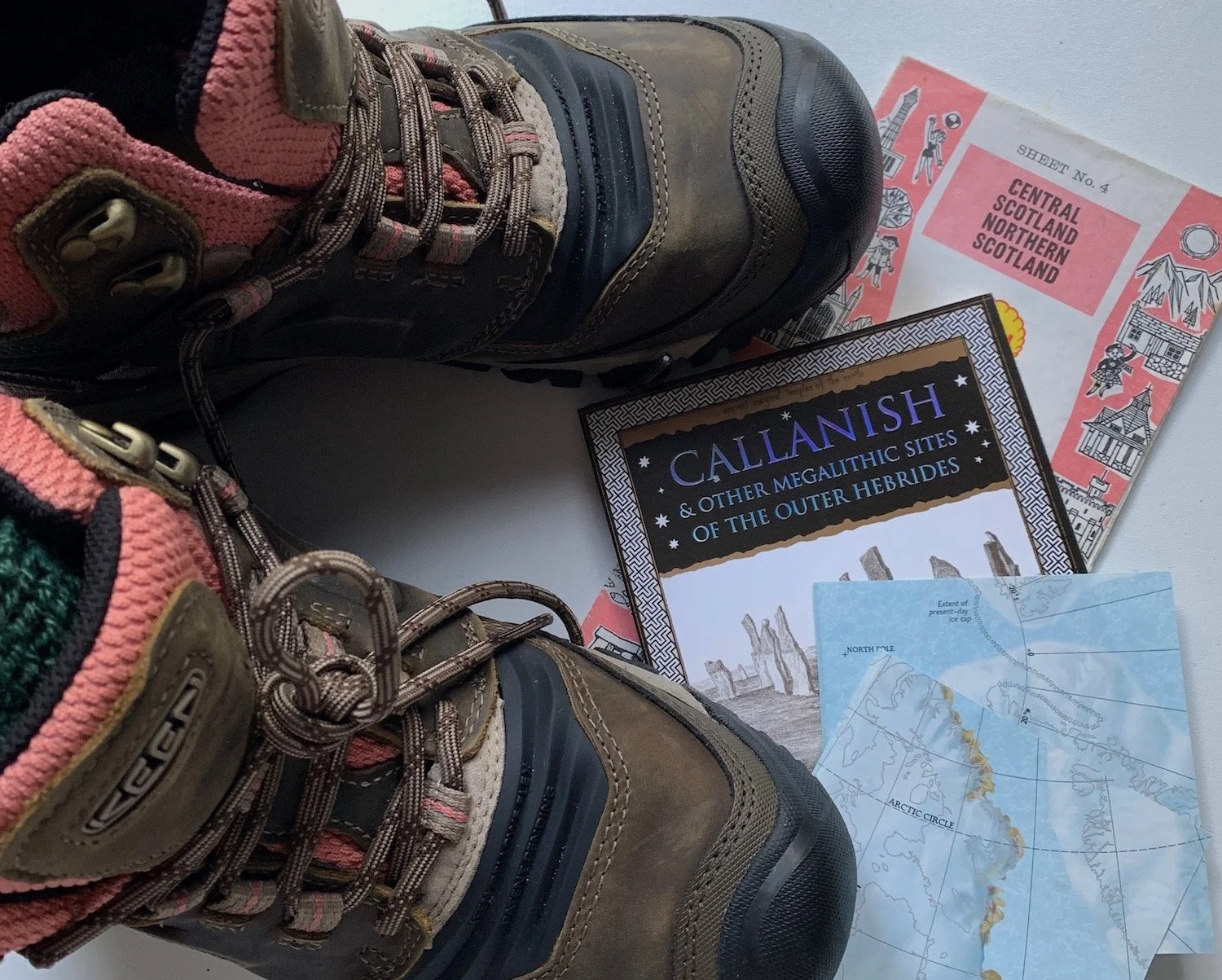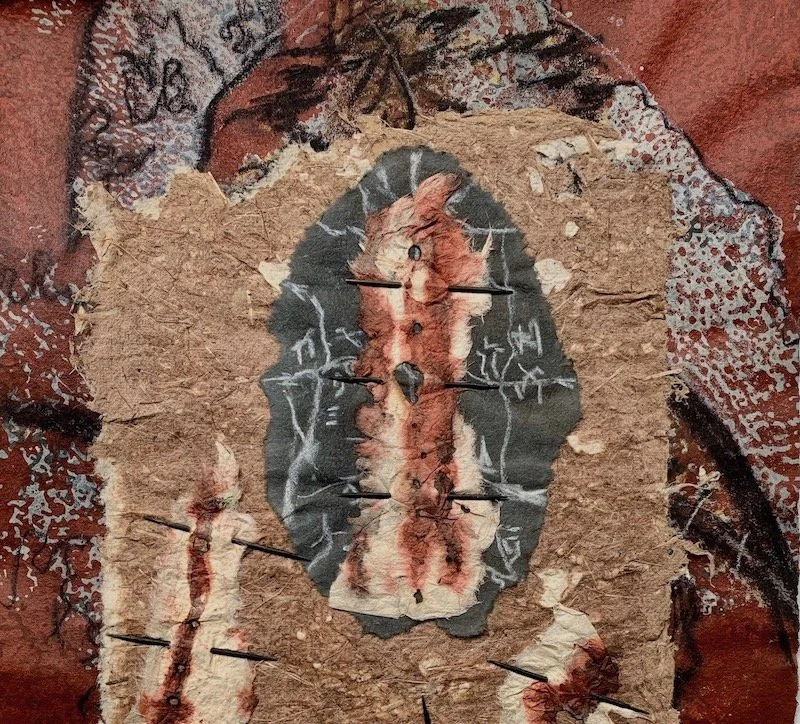Walking, Mapping
One of the 91 collage postcards I made in 2018 to document my travels. Maybe I’ll do it again as a mapping practice this year.
I’m not a great walker, although I would like to be. I read so many books where adventurers, poets and artists strap on their rucksacks and turn to face the ‘open road’ with anticipation and excitement. When I tie up my (hiking) boot laces I know that by the end of the day, my back will ache and my legs will feel like they have undergone some degree of torture.
Yet without movement life ceases. We need to stay active and walk. There are so many walking ‘accessories’ these days to motivate the reluctant to measure their steps. Fitbits and phone apps have people constantly checking in with themselves to see how far they have walked that day.
I like the idea of ‘mapping’. It’s an arts practice I think I could easily adapt. Walking, mapping and making lines has been a dominant theme of artmaking since Paul Kllee said coined the phrase that drawing was like “taking a line for a walk”.
“For the artist communication with nature remains the most essential condition. The artist is human; himself nature; part of nature within natural space.”- Paul Klee, 1923
British artist Richard Long made his famous performance piece A Line Made by Walking (1967)when he walked back and forth along a straight line in a field in Wiltshire until the turf flattened and looked like a distinctive line. He photographed it and the Tate acquired it in 1976. In their catalogue it says:
“ This piece demonstrates how Long had already found a visual language for his lifelong concerns with impermanence, motion and relativity.”
The key words in this are motion, impermanence and relativity – how are we relative to the actions we take and in what context are we making them? How can we use the motions of our body to create marks? Does all art have to be fixed or can the photograph be a record of action and impermanence?
I think of the ephemeral artist of Andy Goldsworthy whose photographs are records of each ‘intervention’ in the landscape. And of ceremonial grounds that First Nations peoples create in order to perform and dance art and stories.
Then my thoughts turn to the artist Mirdidingkingathi Juwarnda Sally Gabori (c.1924–2015) whose stunning, vibrant artworks I first encountered at the Queensland Art Gallery some years ago. These cultural maps of her of her country where she grew up on Bentinck Island communicate the emotional memory of place in a way I had not felt before. She did not start painting until she was 80 years old, but in that short space of time before her death she produced an astonishing oeuvre of art.
I think of walking and maps and lines on the ground as I contemplate refreshing my daily artwork practice with maps. Paper maps have always been my go-to source of collage inspiration. Yet last month even those maps became a burden of repetition and had lost their appeal.
Perhaps it is the act of waking the maplines or walking itself that needs to accompany this collage arts practice. As I pack my boots this week in my suitcase I think of the new lands I will encounter in the UK where the right to walk the land has been codified in law as the ‘right to roam’, or ‘freedom to roam’ through the Countryside and Rights of Way (CRoW) Act 2000 which gives a legal right of public access to mountains, moorland, heaths, some downland and commons.
A key protest that helped that law come into being was the Kinder Scout Mass Trespass in 1932, which saw coordinated groups of walkers taking to the hills to converge on the Kinder Scout plateau where there was a confrontation between the walkers and gamekeepers. This protest raised awareness of the rights of citizens to access land that was privately owned by the “aristocracy”.
There is currently a battle raging over increasing this access to lakes, rivers and woodlands that are still 92% owned as private property. Only last year this was debated and then squashed by the government but the campaign continues.
With such a history of walking as a citizens right, I might be persuaded to strap on my boots to engage in walking as an act of solidarity. Let’s see where my favourite boots will take me this time…
My new boots and maps taken in February 2022 as I contemplated my journey through Scotland to Iceland and Greenaland.





